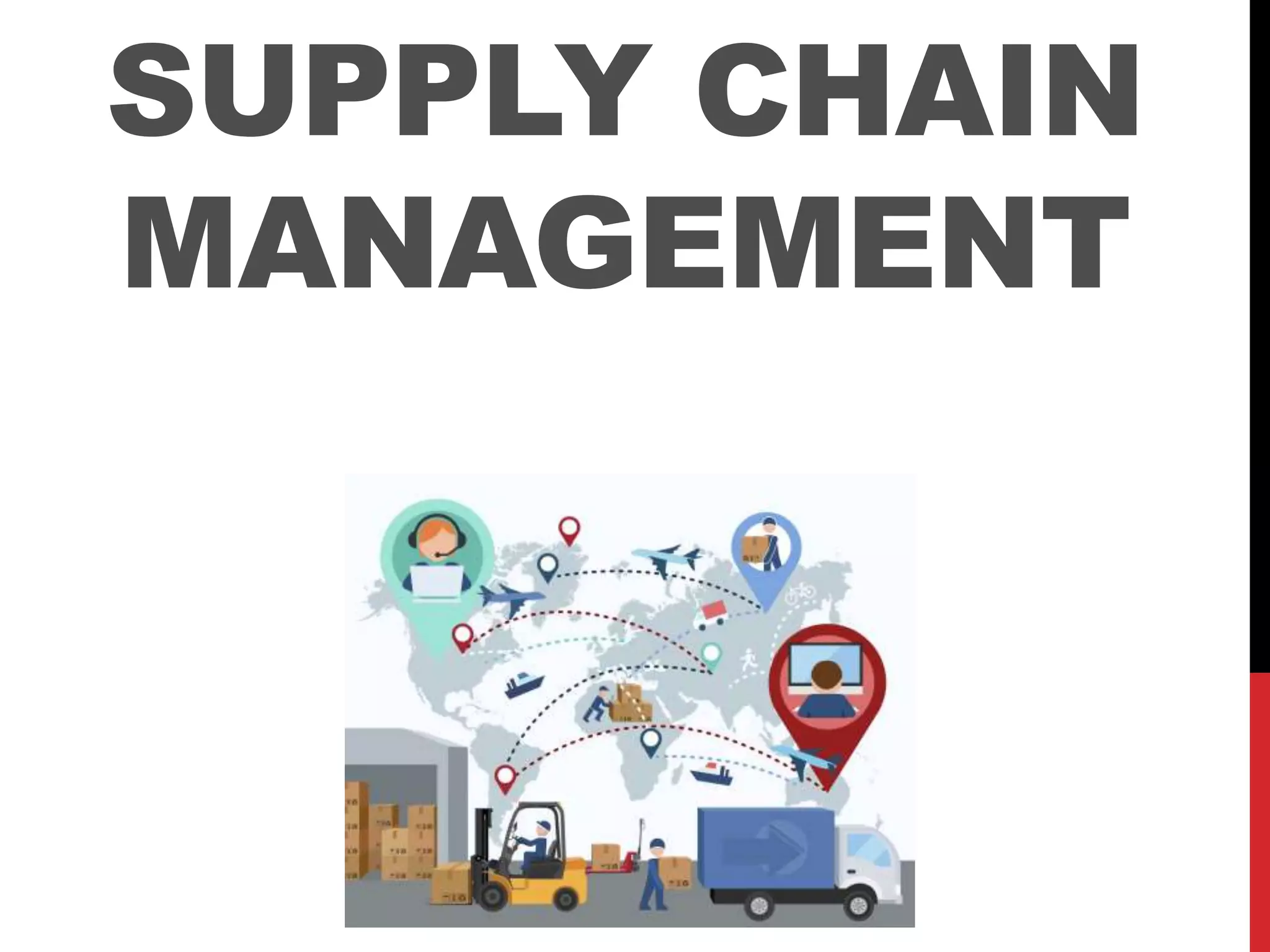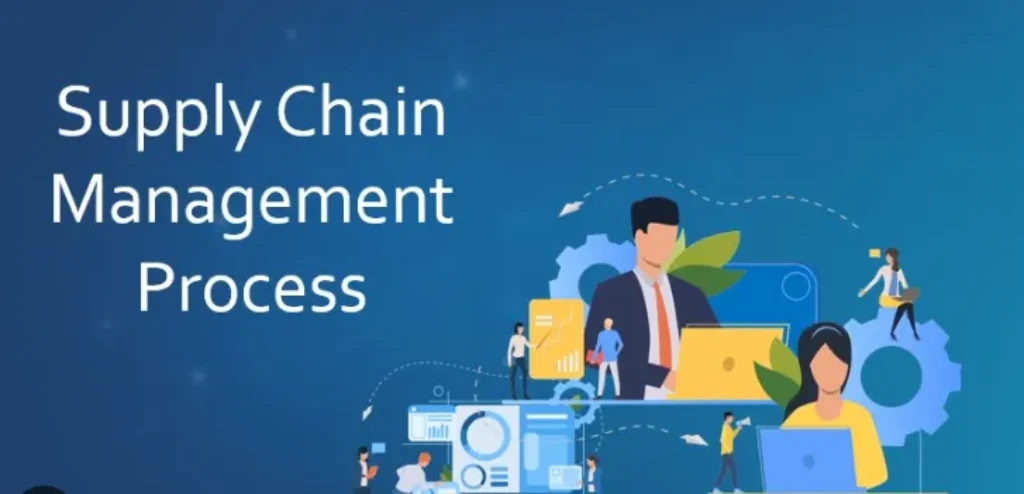
In today’s fast-paced global economy, businesses must deliver products and services efficiently, cost-effectively, and reliably. This need is where supply chain management (SCM) plays a crucial role, coordinating everything from sourcing raw materials to delivering finished products to customers. SCM ensures the smooth movement of materials, information, and products across the entire chain, involving suppliers, manufacturers, warehouses, distributors, and retailers.
This guide explains what supply chain management is, its key components, processes, strategies, benefits, challenges, and future trends. Whether you are a business professional, student, or simply curious, you will learn how SCM improves efficiency, cuts costs, and keeps customers satisfied.
Table of Content
Understanding Supply Chain Management
At its core, supply chain management involves overseeing the entire network that delivers a product or service. Effective SCM connects people, processes, and technology to optimize operations, lower costs, and improve the customer experience.
The main goals of SCM are straightforward but impactful:
- Ensure timely delivery of products.
- Cut operational costs and waste.
- Enhance product quality and reliability.
- Improve collaboration with suppliers and partners.
- Increase customer satisfaction.
Essentially, SCM focuses on doing the right things at the right time and in the right way while minimizing risks and maximizing efficiency.
Why Supply Chain Management Matters
Effective supply chain management is more than just an operational task; it is also strategic. Here’s why it is important:
- Operational efficiency: Streamlines processes and removes waste.
- Cost reduction: Optimizes inventory, transportation, and production costs.
- Customer satisfaction: Ensures products reach customers promptly and in great condition.
- Risk management: Identifies and addresses potential supply chain disruptions.
- Competitive advantage: Agile and efficient supply chains help businesses stand out in the market.
- Sustainability: Efficient logistics and responsible resource use lower environmental impact.
Companies with strong SCM perform better than their competitors in profitability, efficiency, and customer loyalty.
Key Components of Supply Chain Management
A well-functioning supply chain consists of several interconnected parts:
Planning
- Forecasting demand
- Aligning production with market needs
- Developing inventory and capacity plans
Sourcing
- Finding reliable suppliers
- Negotiating contracts and terms
- Ensuring quality and timely delivery
Manufacturing
- Efficient production scheduling
- Quality control
- Managing production costs and capacity
Logistics
- Warehousing and inventory management
- Transportation and distribution
- Order fulfillment and delivery
Return Management (Reverse Logistics)
- Handling product returns, recalls, or recycling
- Maintaining customer satisfaction and sustainability
Integration
- Coordinating suppliers, manufacturers, distributors, and retailers
- Sharing data for real-time decision-making
The Supply Chain Management Process
SCM is a structured, cyclical process that maintains operational flow:

- Demand Planning: Use historical data and market trends to predict customer needs.
- Procurement and Supplier Management: Select suppliers based on quality, cost, reliability, and sustainability.
- Production Planning: Schedule manufacturing to optimize resource use and reduce waste.
- Inventory Management: Balance stock levels using strategies like Just-In-Time (JIT) and Economic Order Quantity (EOQ).
- Logistics and Distribution: Move goods efficiently to warehouses, retailers, or customers.
- Performance Monitoring: Track KPIs such as order accuracy, delivery time, and inventory turnover; continually improve processes.
Related Articles to Explore
Dive deeper into the interconnected world of business operations and management with these guides:
- What Is Operations Management – Understand how businesses oversee production, quality, and efficiency in every stage of the supply chain.
- What Is Inventory Management – Learn how effective inventory control keeps supply chains running smoothly.
- What Is Resource Coordination in Incident Management – Discover how proper resource coordination ensures resilience and adaptability.
- What Is Asset Management – See how managing physical and financial assets optimizes operations.
- What Is Business Management – Explore how effective management frameworks strengthen the entire supply chain ecosystem.
- What is Fleet Management? – Understand how fleet optimization enhances logistics and transportation performance.
Types of Supply Chain Management
Supply chains come in various forms. Common types include:
- Lean Supply Chain: Focuses on cutting waste and boosting efficiency.
- Agile Supply Chain: Flexible and responsive to changing market needs.
- Hybrid Supply Chain: Combines lean and agile approaches for balance.
- Green Supply Chain: Emphasizes sustainability and reducing environmental impact.
- Global Supply Chain: Manages international sourcing, production, and distribution.
Supply Chain Management Strategies
Success in SCM involves effective strategies:
- Demand-Driven Approach: Align production and inventory with real-time customer needs.
- Supplier Collaboration: Build strong partnerships to improve quality and reduce risk.
- Inventory Optimization: Maintain efficient stock levels while minimizing holding costs.
- Technology Integration: Use ERP, SCM software, and analytics tools for better decisions.
- Risk Management: Anticipate disruptions and create contingency plans.
- Continuous Improvement: Regularly review and refine processes.
Tools and Technologies in Supply Chain Management
Modern SCM relies on digital tools for visibility and efficiency:
- ERP Systems: Integrate finance, operations, and supply chain processes.
- SCM Software: Offers end-to-end visibility and planning tools.
- Warehouse Management Systems (WMS): Optimize storage and picking processes.
- Transportation Management Systems (TMS): Plan and track logistics.
- Data Analytics: Forecast demand, monitor KPIs, and inform decisions.
- IoT & RFID: Enable real-time tracking of goods and inventory.
- AI & Machine Learning: Enhance forecasting and predictive maintenance.
Technology makes supply chains smarter, faster, and more reliable.
Role of a Supply Chain Manager
A supply chain manager ensures the entire chain functions smoothly. Key responsibilities include:

- Planning and coordinating sourcing, production, and logistics.
- Negotiating with suppliers and vendors.
- Managing inventory and order fulfillment.
- Monitoring performance through KPIs.
- Addressing disruptions and risks.
- Driving initiatives for continuous improvement.
Successful managers blend analytical, organizational, and leadership skills to boost efficiency and satisfaction.
Benefits of Effective Supply Chain Management
- Reduced Costs: Optimized logistics and inventory management save money.
- Customer Satisfaction: Accurate, timely deliveries build loyalty.
- Operational Efficiency: Streamlined processes cut delays and waste.
- Competitive Advantage: Agile supply chains help businesses stand out.
- Risk Mitigation: Proactive planning minimizes disruptions.
- Sustainability: Efficient resource use lowers environmental impact.
A well-managed supply chain is vital for business growth.
Challenges in Supply Chain Management
Even top supply chains encounter difficulties:

- Global disruptions, like pandemics or geopolitical conflicts.
- Complex logistics networks.
- Supplier reliability and quality issues.
- Demand shifts and forecasting inaccuracies.
- Regulatory compliance and trade limitations.
- Integrating new technologies and data systems.
Overcoming these challenges requires careful planning, collaboration, and ongoing monitoring.
Real-World Examples
- Amazon: Uses predictive analytics and robotic warehouses for fast delivery.
- Toyota: Employs lean manufacturing and JIT inventory to minimize waste.
- Zara: Has an agile supply chain that adapts quickly to fashion trends.
- Procter & Gamble: Leverages supplier collaboration for efficient procurement.
- Walmart: Utilizes advanced logistics for global retail operations.
These examples illustrate how effective SCM fosters efficiency, customer satisfaction, and competitive edge.
The Future of Supply Chain Management
The future of SCM is shaped by technology, sustainability, and resilience:
- Digital Supply Chains: Offer real-time visibility through IoT, AI, and analytics.
- Sustainable Practices: Focus on reducing carbon footprints, using renewable energy, and encouraging a circular economy.
- Resilience: Build supply chains to endure disruptions.
- Automation & Robotics: Streamline warehousing, production, and logistics processes.
- Data-Driven Decisions: Use predictive analytics and machine learning for smarter planning.
SCM is evolving to become more agile, sustainable, and centered on customer needs.
Conclusion
Supply chain management is crucial for modern businesses. By coordinating sourcing, production, logistics, and distribution, SCM ensures smooth operations and satisfied customers.
Success hinges on strategic planning, collaboration, embracing technology, and ongoing improvement. In a competitive global market, mastering supply chain management is vital for operational efficiency, sustainable growth, and long-term success.


